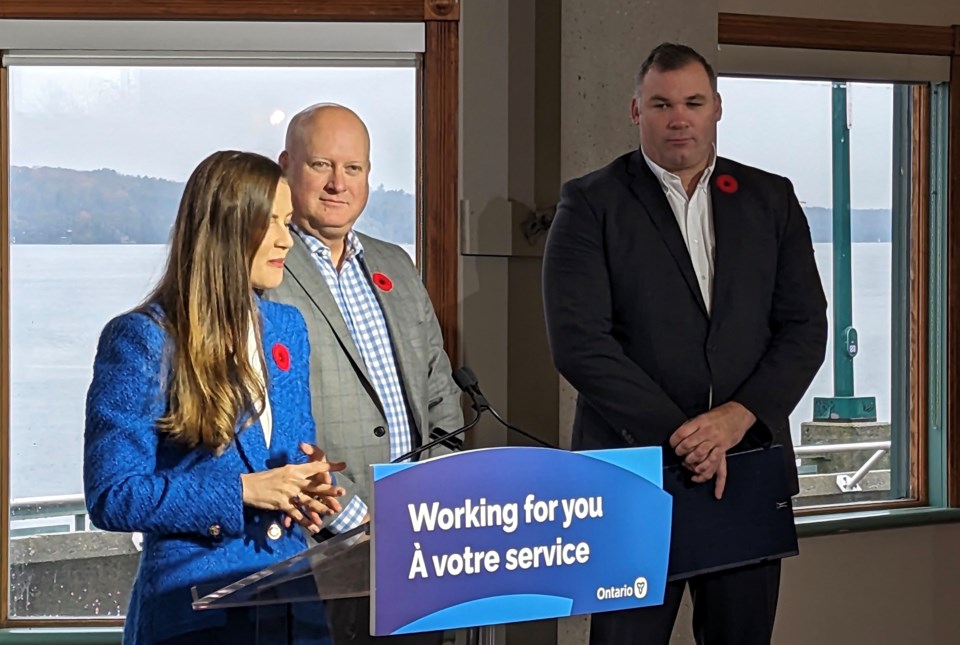MidlandToday welcomes letters to the editor at [email protected] or via the website. Please include your full name, daytime phone number and address (for verification of authorship, not publication). The following is in response to a story titled 'Province drops $1.3M into Lake Simcoe for phosphorous reduction,' published Nov. 9.
The Lake Simcoe watershed needs to be protected and requires substantial investment.
All told, the province’s press release celebrates the spending of less than $1 million per year on Lake Simcoe.
Let us recall that over approximately a 10-year period, $100 million, from provincial and federal funding sources, was invested in protecting Lake Simcoe. The only resulting significant reductions in phosphorus pollution to Lake Simcoe came from the previous provincial government’s rules that clamped down on phosphorus pollution from sewage treatment plants, which the $100 million helped to support.
The resulting reduction of the phosphorus load by three tonnes per year still leaves us short of the target (44 tonnes per year) needed to ensure the long-term health of Lake Simcoe.
Indeed, phosphorus loads are on average still double the science-based ecological target set in the Lake Simcoe Protection Plan. These loads are projected to rise due to housing and highway development pollution, and will be driven by climate change, whose impacts are projected to increase.
Phosphorus pollution causes excess aquatic weed growth, low oxygen levels, and contributes to algae blooms.
We see no action plan that will result in lower phosphorus loads yet. The province of Ontario has not yet met its obligation to update its Lake Simcoe Phosphorus Reduction Strategy. We need a detailed and serious plan to bring phosphorus loads down. Words and litter pick-ups will not save Lake Simcoe.
Included in the claim that “Since 2018, our government has committed more than $27.3 million …” is a commitment of $24 million towards a stalled phosphorus reduction plant on the Holland River. This is money that has just been committed, not spent. We will celebrate those phosphorus reductions when we see them.
The municipalities of Georgina, Bradford West Gwillimbury, Brock and Oro-Medonte have all passed resolutions calling on the government of Ontario to develop a real plan and a budget to reduce Lake Simcoe’s phosphorus pollution to 44 tonnes per year by 2030. This goal has also been endorsed by the Chippewas of Georgina Island First Nation and [Ontario Liberal leadership candidate and Mississauga] Mayor Bonnie Crombie.
The state of the lake has not, in fact, improved substantially. To the contrary, salt levels continue to rise, the cold-water fishery continues to flounder, wetland protection has been weakened, which will lead to a loss of vital wetlands and habitat.
The province continues to under-report the significant existing and looming threats to the lake, while overplaying any gains. This is bad science, it is irresponsible, and is not saving Lake Simcoe.
In contrast, the activists who are trying to bring truth to light using research and government data have made serious recommendations in a letter sent to Minister [Andrea] Khanjin [on Thursday]. In addition to spurring activity on the items discussed above, the letter encourages the province to take immediate action on chloride/salt pollution; to reverse the legislative changes made by the province that significantly cut conservation authorities’ hand in planning application review; to reverse legislative changes that weaken wetland and water protections. The letter can be found here. It will be posted here, too.
The notion that we can disregard science and still have a healthy Lake Simcoe is pure fantasy. We can’t have our cake and eat it, too.
Claire Malcolmson, Rescue Lake Simcoe Coalition executive director
Margaret Prophet, Simcoe County Greenbelt Coalition executive director



